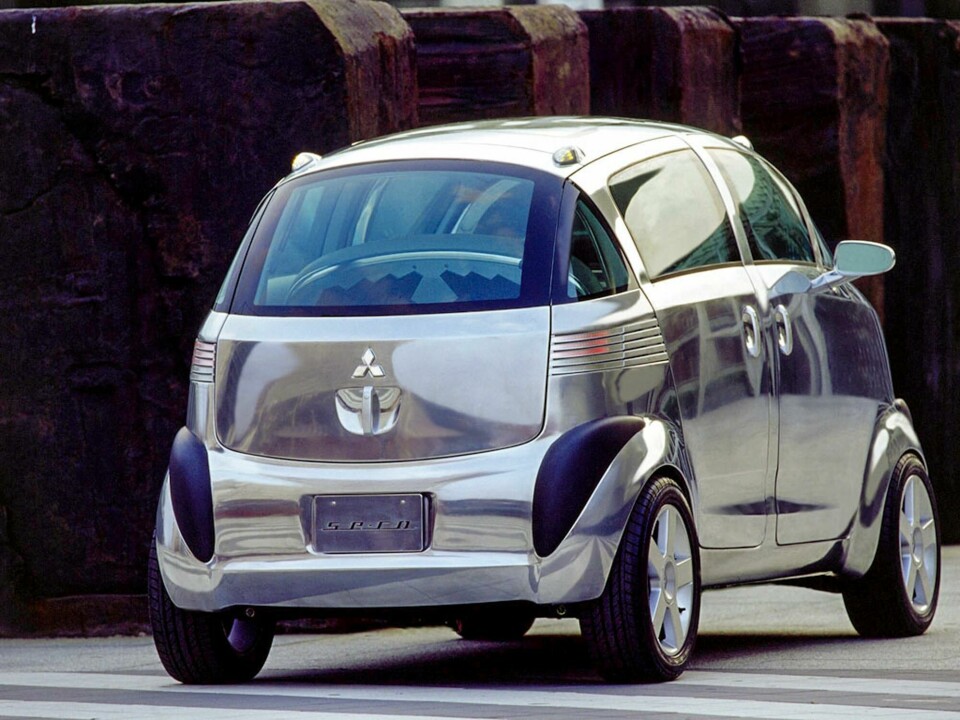
Concept Car of the Week: Mitsubishi SE-RO (2003)
Mitsubishi’s noughties dieselpunk showcar used the 1950s to predict the future
The Mitsubishi i was developed at a particularly fertile period of design at the Japanese firm, when DaimlerChrysler and Mitsubishi had an alliance of resources. The i itself previewed by not one but two showcars – the I, which was a concept designed by Olivier Boulay, widely seen as an allusion to the Renault 4C; and the SE-RO, a completely different lifestyle vehicle that would extend the owner’s living or workspace out into the city and beyond.

Introduced at the 2003 Tokyo motor show, the SE-RO, short for SEcret ROom, was – in Mitsubishi’s words – “targeted mainly at male owners over 35” as a “car for going out to parties with friends; that provides a hobby workspace inside the vehicle; and for getting away from the city and enjoying outdoor pursuits.”

The SE-RO was a monospace mini-MPV, vaguely reminiscent of the 1956 Fiat Multipla, and nearly the same size, at 3400mm long, and with a 2500mm wheelbase. Its design was retrofuturistic, with a shiny aluminium exterior that alluded to Airstream Land Yachts, Zeppelins, 1950s cars, and fighter aeroplanes, particularly the legendary Japanese ZERO fighter of World War II (SE-RO = ZERO, get it?) This dieselpunk sensibility reflected the vision of its designer, Shuji Yamada, who saw the car as a realisation of his childhood fantasies of the future.

The SE-RO’s monoform body featured soft front and rear ends linked in a seamless line by the glasshouse that extended the length of the car. A looping character line begins just above the headlamps and curves around the entire car, creating an unusually high beltline.

The glasshouse has curved front and rear windows and inverted A- and C-pillars, similar to those found on 1950s cars, and on the Dodge Super 8 Hemi concept shown in 2001. The glasshouse also follows jetset ’50s cars in attempting to create an aircraft cockpit-type feel – not only of the famous ZERO fighter, but also of German Messerschmitt planes and the firm’s subsequent Kabinenroller bubble car of the 1950s.
On the lower part of the body the door panels turned inward to reveal a lower character line that unites the front and rear wheelarches and the lower part of the front and rear fascia. The doors swung open suicide-style to reveal a surprising amount of tumblehome in this little monoform.

The interior, with its exposed aluminium, continues the aircraft theme. However the cabin’s function was as the aforementioned ‘secret room’ with fold-away seats that transformed the interior space into a rolling lounge, office or even workshop – potentially highly desirable in crowded, hyper-urbanised Japan.

The rear seats could be folded into the luggage compartment to create a generous workspace, or they could be folded flat to create a spacious luggage compartment.

The IP also featured a nod to the 1950s, with a jukebox-like instrument binnacle that in its centre, while the steering column folded up vertically, maximising space. The dieselpunk detailing was also seen in the tubes, connectors, and handles, and continued to echo those of the Super 8 concept.

Looking back from 2016, as the world becomes ever-more urbanised, the SE-RO appears to be coming of age. A micro-lounge, flexible in layout, with innovative drivetrain placement, and a large viewing canopy could be a winning concept if mated with emerging autonomous driving technologies and innovative ownership models. Perhaps the SE-RO’s retro vision of the future was not so retro after all.




